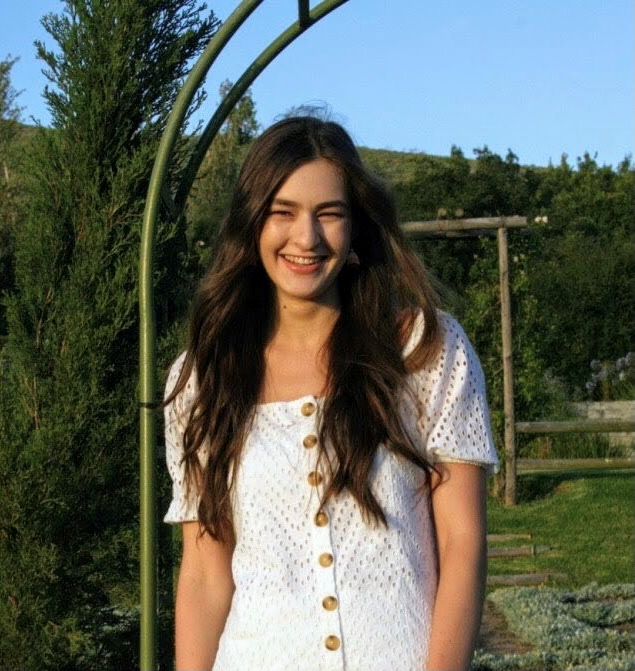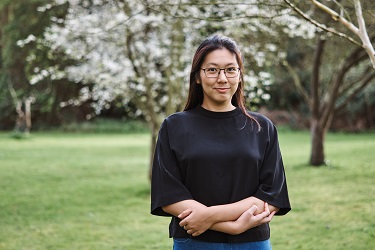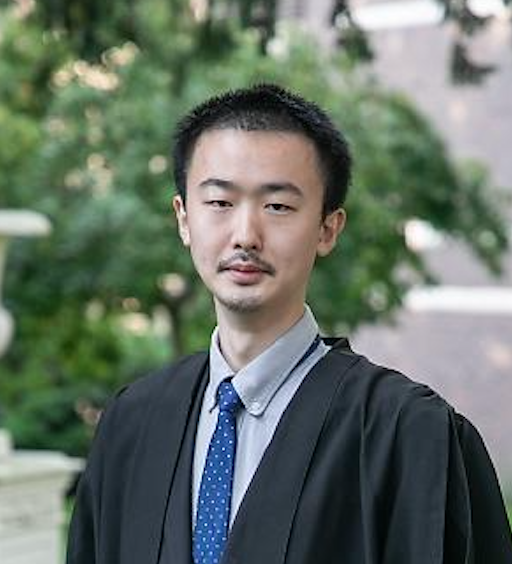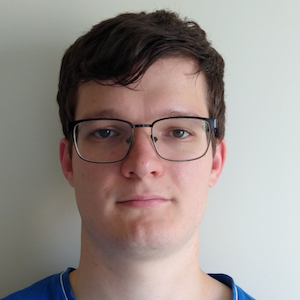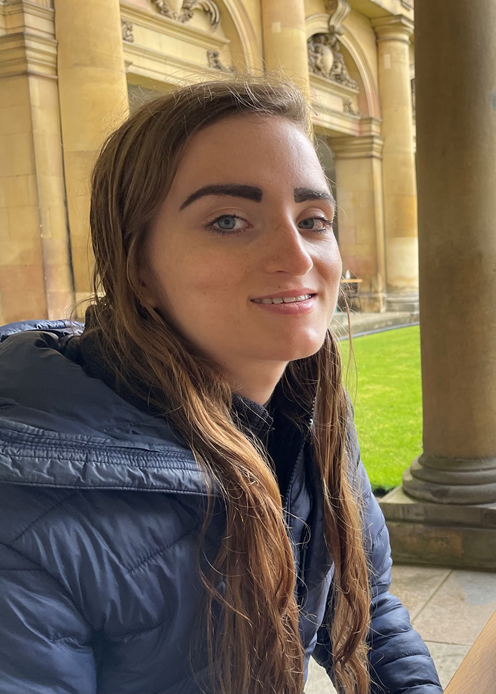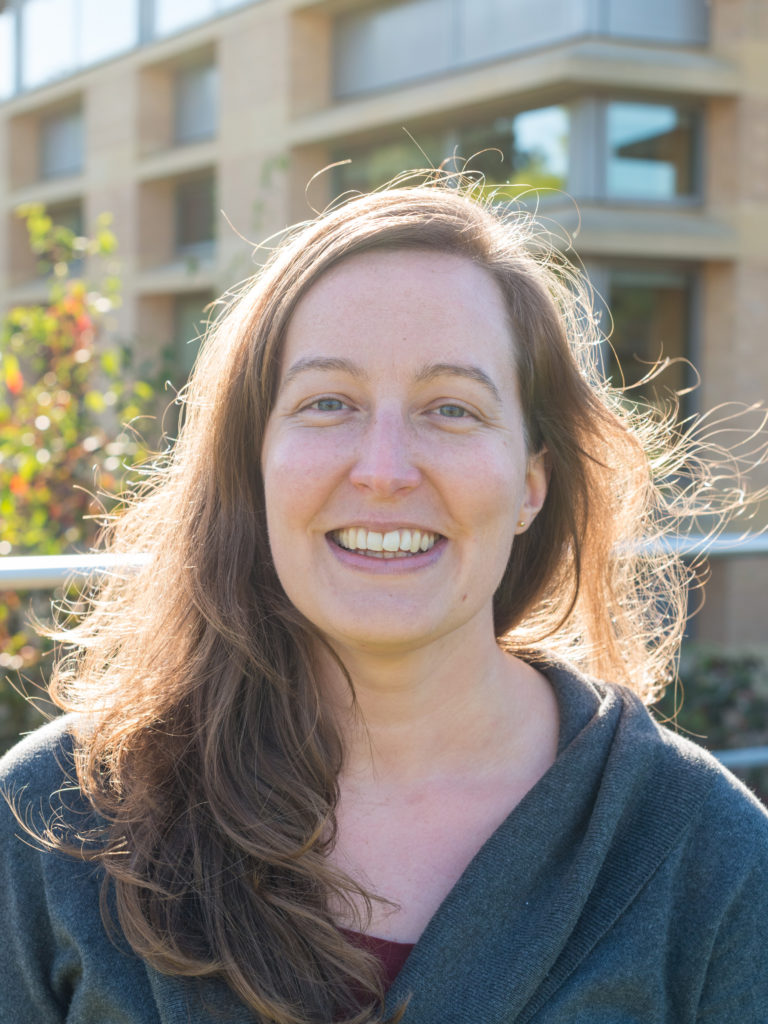Current aligned students
2022 intake
|
Ke Ding (DK)
Before starting as an MPhil in ACS student atCambridge, I completed an MSc in AI at Imperial College London, following 3 years of undergraduate studies at University College London where I received my BEng degreein Mechanical Engineering.I ambroadlyinterested in applied machine learning, robotics and mobile systems, having conducted my MSc thesis on deep learning assisted perching for bio-inspired drones at the Aerial Robotics Labof Imperial College.I am motivated by my belief in a diverse and sustainable future and I hopethrough my workI could make meaningful contribution towardsthatfuture.Ialsoenjoy readinghistory and philosophy in my free time. |
|
Ryan Gibb
I am a PhD student in the Computer Lab with a background in Computer Systems. I have researched network layer mobility protocols, name resolution systems for ubiquitous computing, and reproducible builds of using declarative package management. I am interested in applying operating systems and networking to sustainability problems.
|
|
Emily Morris
I am an MPhil in Advanced Computer Science student at the University of Cambridge. My background is in rather theoretical computer science, but in my masters, I am aiming to delve more into the practical applications of machine learning to climate change and conservation problems. In my thesis, I am focussing on biodiversity mapping, and how we can improve the current approaches using remote sensing data and recent advancements in deep learning. |
| Adam Noach
I am a PhD student in Computational Ecology broadly interested in environmentally impactful applications of AI to remote sensing data. Before starting my PhD I undertook a BSc (Hons) in Mathematics and Physics and a MSc in Artificial Intelligence, both at the University of Edinburgh. My PhD project involves researching peat-forming wet woodlands to inform policymaking and stakeholder action for them. Once extensive across the UK, wet woodlands are now rare and understudied ecosystems that may have a key role to play in nature-based solutions for carbon capture. The project will investigate their ecological dynamics as unique ecosystems, update estimates of their current and potential extent and explore their potential for flood mitigation. This involves collecting and analysing high- and low-resolution remote sensing data (LiDAR, hyperspectral photogrammetry from TLS, drone and satellite) using AI and other modern data science methods to directly inform ecosystem management and explore their potential role in mitigating anthropogenic environmental change. I am a member of the Wet Woodlands Research Network and funded by the C-CLEAR DTP. My supervisors are Dr Emily Lines (Cambridge, Department of Geography), Dr Alice Milner (Royal Holloway) and Professor Andy Baird (Leeds). |
|
Vichawan Sakulsupich
PhD project: Quantifying the role of sulfur emissions in Earth system models Supervisor: Professor Alexander T. Archibald and Dr Paul Griffiths (Department of Chemistry) I am a PhD student in the Chemistry department working on Earth system models and how it could be used to study atmospheric chemical composition. Carbon dioxide and methane changes are driving the increase in surface temperatures we are experiencing. Emissions of sulfur dioxide offset some of this warming through their formation of aerosols, which modify the properties of clouds. However, the processes sulfur dioxide and aerosols undergo in the atmosphere are very complex and to understand them we need to combine observations with state of the art Earth system models. My project aims to improve our understanding of the role of anthropogenic emission changes on the oxidation, burden and distribution of sulfur species in the atmosphere and quantify their climate impacts. This work is key to improving our understanding of the Earth system and reducing the uncertainty in the role of anthropogenic aerosols. |
| Wenzhong Wang PhD project: Jet variability and the ‘signal-to-noise’ paradox Supervisor: Professor Peter Haynes (Department of Applied Mathematics and Theoretical Physics) My research focuses on the intrinsic variability of the mid-latitude atmospheric jet and the North Atlantic Oscillation. The dynamics of the zonal jet is an important component of internal variability in real and modelled North Atlantic climate, and the inability of the current climate models to capture this variability may lead to the ‘signal-to-noise’ paradox. This project aims to explore the potential relation between properties of simulated jet variability and the source of the ‘signal-to-noise’ paradox concerning skilful predictions. I am interested in machine learning techniques in climate science and I hope they can be applied in my routine numerical simulations. |
|
Jure Zgubic
PhD project: Improving parameterisation of convection in climate models Supervisor: Professor Michael Herzog (Department of Geography) Description: My project investigates the interaction between convective clouds and their impact on the cloud spectrum with the aim to improve the representation of atmospheric convection in climate models. It relies on data from Large Eddy Simulations to quantify and characterise key elements of convective processes which will then be integrated into existing parameterisations of convection. |
2021 intake
Amandine DebusPhD project: Using high-resolution Earth observation and socio-economic data to improve land-use classification and deforestation prediction in sub-Saharan Africa Supervisors: Dr Emily Lines (Department t of Geography) and Dr Emilie Beauchamp (IIED) Amandine’s PhD focuses on using high-resolution optical (e.g. PlanetScope) and SAR (e.g. Sentinel-1) satellite data, machine learning and deep learning techniques, and socio-economic data (e.g. governance, demographic) to better understand and monitor land-use changes in sub-Saharan Africa. Using Cameroon as a case study, Amandine’s project aims to model the spatial and temporal dynamics of transitions from forest to multiple land-use types, and the socio-economic drivers behind them. She is working with the International Institute for Environment and Development (IIED) and in-country partners to ensure her models are tailored to maximise their reusability for ongoing policy-making and conservation programmes. |
Joe FonePhD project: Machine Learning in Seismic Tomography Supervisor: Professor Nick Rawlinson (Department of Earth Sciences)
|
Amelia HolcombPhD project Supervisor: Prof Srinivasan Keshav |
Scott JeenPhD project:
Supervisor: Dr Jonathan Cullen (Department of Engineering) Scott's a PhD student in the engineering department, researching theoretical and applied reinforcement learning. He works with the US firm Emerson Electric to build RL agents that can control energy-intensive industrial processes efficiently, drawing power from the grid at optimal times to better match intermittent renewable supply with demand. Doing so requires agents that are capable of learning useful polices in low-data regimes, which creates several interesting theoretical challenges that he believes are best mitigated by model-based RL. More generally, he's interested in probabilistic approaches to machine learning, and the role these techniques can play in climate change mitigation |
Sam Lewin
PhD project: Modelling turbulent mixing in the world's oceans Supervisor: Professor Colm-cille Caulfield (Department of Applied Mathematics and Theoretical Physics) My research focuses on understanding and modelling the dynamics and mixing properties of stratified turbulent flows. Such flows are ubiquitous in the ocean, where turbulence facilitates the vertical mixing of important properties such as heat, carbon, and nutrients. The stabilising presence of gravity in this setting means that turbulence is often patchy and intermittent, making modelling the resulting small-scale mixing a challenging problem. I am currently interested in two key questions in stratified turbulence. Firstly, what is the importance of the history of the flow in the development of turbulence and how can existing models of mixing be adapted to capture the importance of time-dependent dynamics that act to modify the mixing properties? Secondly, how can we use data-driven tools such as machine learning to better understand the structure and evolution of stratified turbulent flows, and what, if any, physical insight can be gained from such `black box' models? |
Jiayu Pan
PhD project: Future-proofing office design: optimising the office space design with experimental data-driven approaches Supervisor: Dr Ronita Bardhan (Department of Architecture) My PhD project aims to study the office design in the post-pandemic era with the analysis and prediction of the use of office space. As the challenge of climate change, the risk of black-swan events like the pandemic and the evolution of information technology are reshaping the way that people use the office, it is essential to rethink what type of office space is desirable and sustainable in the future and figure out how to respond to the rising demand of managing environmental risk and accommodating new working modes through the design of space. The data-driven methods have a large potential to inform evidence-based design decisions. The application of machine learning (ML) approaches assists the analysis of primary data, the prediction of office performance and the optimisation of office layout. |
Norbert Toth
PhD project using ML methods for the quantification of electron microscope data from volcanic rocks Supervisor: Professor John Maclennan (Dept of Earth Sciences) My project aims to develop a more quantitative and more automated method for microscopy analysis of the products of volcanic eruptions. The work will centre around the use of signals generated through electron microscopy in state of the art machine learning systems. This is then hoped to allow for a more intelligent method to study the underlying physics and chemistry of volcanic plumbing systems. |
2020 intake
Edgar CifuentesEdgar's research aims to develop microclimatic models to understand how forest composition affects local climates in Colombia and how its degradation has repercussions for biodiversity and global warming. He will track the changes in forest cover and microclimates by combining climatic data from field sensors with a diverse range of satellite data. By using AI, he will be able to build statistical models that will enable the discovery of microclimatic patterns and predicting these in the future (or past), and in larger areas. Because Colombia has a diverse set of climates and landscapes, these models will be useful for predicting microclimates at regional and global scale in the tropics. Datasets and models will be the basis for showcasing detailed distributions of tropical species and the quantification and localization of future changes in temperature and moisture. Through this work, it would be possible then to prove the hypothesis that climatic changes in the tropics are predominantly driven by land-use changes (deforestation) and to a lesser extent, by global warming through greenhouse gas emissions. |
Jess Fleming
PhD project: Using low-cost sensors to explore the properties of particulate matter Supervisor: Professor Rod Jones (Department of Chemistry) Each year, four million people die prematurely due to particulate air pollution (PM). Current legislation aims to reduce the total mass of air pollution particles and completely ignores the fact that particles of different chemical composition may have different toxicities. Monitoring efforts hence focus on mass concentration rather than the chemical composition. This broad-brush approach could be replaced by more targeted measures against specific compounds, if we knew more about particle composition and its link to health. For my PhD, I am developing a low-cost, portable instrument to measure the bulk composition of particulate matter via its water content, using humidity-controlled optical particle counters. I have so far been working on laboratory validation of the instrument using inorganic species commonly found in atmospheric particles. The next step will be a field campaign in Birmingham to compare compositional data from this instrument to high grade reference PM monitors. The use of such an instrument to link health impacts to particle composition, rather than simply total particle mass, has the potential to change how we tackle the global PM problem. |
Aaron Wienkers
PhD project: Dynamics of Strong Submesoscale Ocean Fronts Unstable to Symmetric Instability Supervisor: Dr John R. Taylor Aaron is studying the dynamics of ocean fronts — the “storms” of the upper ocean and their resulting turbulence. Although Aaron’s work does not directly involve machine learning, he has developed expertise in the theory of ocean & atmospheric circulation, mathematical analysis techniques, and high performance computing for massively parallelised numerical simulations. |
2019
James BallJames' PhD will help us discover how resilient tropical rainforest are to anthropogenic climate change. Tropical forests (TFs) store a vast quantity of carbon and can act as a substantial carbon sink, playing an important role in regulating the global climate system. However, the interlinked threats of deforestation and increased likelihood of drought from climate change put their continued existence in doubt. The aim is to apply innovative deep learning methods (2D/3D-CNNs, RNNs) to satellite/geospatial data to develop a system that forecasts the locations of future deforestation events. Through collaboration with an international NGO it will facilitate pre-emptive action that protects valuable ecosystems. To better understand how TFs will respond to future climate change, James will be join a team to conduct novel repeat surveys of an Amazon forest plot with airborne LiDAR and other ground based techniques. He will investigate what drives changes in the forest canopy (climatic conditions, plant phenology etc.), including at the individual/species level, and use satellite data to scale up the findings and understand the implications of a changing climate on the wider region. The results will lead to improved design and parameterization dynamic global vegetation models, and thereby advance understanding of the resilience of TFs to climate change. |
Matt BallMatt is working on the use of a Zeiss Secondary Ion Mass Spectrometry (SIMS) instrument for Earth and environmental science applications. As part of this work, Matt works extensively with Machine Learning methods for the analysis of hyper-spectral data, which will be of direct relevance to many of the applications worked on by students in the CDT. He is familiar with the "Hyperspy" toolkit that is used extensively by people in this field for the extraction of quantitative data from hyper-spectral images. |
Xiaolei FengXiaolei's work involves the prediction of mineral structure from quantum mechanical first principles calculations. She is currently investigating the cycling of volatile elements (H, O, N, C) in the silicate portion of the Earth. Her work involves creation of large data sets and search for low energy structures, with implications for geochemical cycling. |
Rachel FurnerPhD project: Developing data-driven emulators of ocean simulators Supervisors: Peter Haynes, Emily Shuckburgh, Brooks Paige, Dave Munday, Dan Jones Rachel's research looks at using machine learning to improve the efficiency of climate models. In particular her work focuses on the ocean, and developing data-driven emulators of various configurations of the MIT general circulation model (MITgcm). She trains different types of neural networks on MITgcm output, so these networks are then able to emulate the underlying simulator in a faster and computationally cheaper way. These methods would eventually enable us to run weather and climate models much faster, allowing for a wider variety of scenarios to be considered, and for larger ensemble sizes to be run giving us greater understanding of the uncertainty in our forecasts. |
Jonathan Rosser
Jon will apply novel data analysis techniques and machine learning algorithms such as dimensionality reduction, clustering and graphical networks to output produced from the latest group of coupled climate models. Unguided learning techniques in particular offer considerable potential to uncover presently unknown or misunderstood relationships within models. Challenges will include adapting existing algorithms to deal with the very high dimensional nature of the data and its non-stationary, non-isotropic, highly-correlated nature. Jon will contrast the state space parameters between models and work to associate such parameters with future model states (e.g why some models convect while others don’t) and constrain climate projections using the dynamical knowledge uncovered. |
Robert Edwin Rouse Robert is applying Bayesian machine learning methods to provide informative and actionable predictions on the future risk of urban flooding. Urban flooding may be caused by a number of factors including local geology and soil type, urban structural design and drainage capacity, extreme weather, and previous rainfall over daily to seasonal timescales. The challenge here is to intelligently combine the required information in a computationally efficient manner while providing robust estimates of uncertainty as required by decision makers. Robert works closely with industry partners Mott MacDonald who are a world-leading environmental engineering company, focusing on a range of structural projects including urban drainage, dams and reservoirs. Over the course of the PhD Robert will work with their engineers to integrate his new algorithms into Mott MacDonald’s data analysis pipelines. |
Matthew ShinMatthew’s research is using ML to understand how we can make more accurate projections of the exposure of people to air pollution in the future using global chemistry climate models. Air pollution and climate change are coupled problems with some very non-linear feedbacks. To understand them we use expensive simulators, models. These models are run at a low resolution and the initial focus has been on using Gaussian Mixture Models (GMMs) to unpick rural and urban air pollutant levels simulated by the global models. |
Haitong Zhe SunPhD project: Global Surface Ozone and Population Health Supervisor: Professor Alex Archibald (Department of Chemistry) Haitong's research looks at improving estimates of the global distribution of surface ozone and accordingly improving our estimates of the exposure-induced health impacts. This will enable an improved population exposure risk assessment for the mortality from associated chronic diseases like COPD. His focus so far has been on the analysis of multi-model CMIP6 (1990-2100) global surface ozone simulations. The model evaluation, together with integrated analyses on other auxiliary features (like underlying land-surface types, meteorological conditions, population etc) are being investigated to determine the sources of simulation-observation biases and malposition, so as to provide suggestions on making improvements in further process-based modelling. The prediction enhancement using Machine Learning (ML) could provide more credible global ozone concentrations, based on which the all-cause premature death and cause-specific mortality will be estimated with multiple Shared Socioeconomic Pathways (SSPs) into 2100, for public health awareness rising and policy-making suggestions. |
Will TebbuttWill Tebbutt holds an M.Phil. in Machine Learning, Speech and Language Techology from the University of Cambridge and an M.Eng. in Engineering Mathematics from the University of Bristol. He previously worked as a researcher in machine learning at Invenia Labs in Cambridge, and is a member of Darwin College. His research interests include Gaussian processes, automating Bayesian inference, the application machine learning to climate science, and probabilistic numerics. |
Risa UenoRisa is developing state-of-the-art probabilistic machine learning methods to predict future changes in heatwaves and their associated increases for energy demand driven by air conditioning usage. Initially the aim is to focus on megacities, where we have a wealth of relevant climate and non-climate data, before applying these models to more data-sparse cities around the world to improve resilience to future climate extremes. Risa’s working closely with AI engineers at the Alan Turing Institute, and industry partners Max Fordham who are an award-winning architectural engineering firm with a specialism for designing buildings accounting for future environmental change, withstanding weather extremes, and maintaining human comfort through natural or low-energy solutions. Before joining BAS and the University Risa completed an MSc in Computational statistics and Machine Learning from UCL and an MPhys from Imperial College London. Between her two masters degrees Risa worked as a Technology Consultant for IBM. |
Ran XiaoRan is a PhD student in the Department of Architecture. In his previous career as an architect, he became fascinated about how design knowledge is acquired through experience. This inspired his research topic, which explores using machine learning to acquire existing spatial knowledge to better inform architects of design decisions. Spatial design is a fundamental issue to sustainability of the built environment. Orientation, shape and size all affects a building’s exposure to the elements. Existing practice, however, relies on modelling, which predicts performances at final stages of design. It means that fundamental changes are rarely made as the spatial design has already been committed. Ran’s research aims to produce a prototype for learning from real world data, coupling spatial design and sustainability performances. It aims to generate sustainable designs at an early stage for similar context, based on a database of best examples of sustainable design. |
Yue Zhu
PhD project: A New Deep Learning Framework for Investigating Spatial-Temporal Evolution of Land Use Patterns to Aid Future Urban Planning in Cities Supervisor: Professor Emily So (Department of Architecture) The impacts of climate change are making cities more vulnerable to natural disasters, especially for the urban population living in the most risk-prone areas such as informal settlements. This makes it urgent to detect, understand and predict urban land use changes. At present, the understanding of spatial-temporal evolution of urban land use patterns (LUP) is heavily constrained by the lack of efficient and precise detection of urban land use changes, particularly in and around informal settlements for which there are few established data sources even in fairly prosperous cities in developing countries. The main aim of my research is to fill this gap and develop a new method to investigate urban land use changes with the necessary efficiency and precision. The research makes use of publicly available datasets of multi-temporal remote sensing (RS) data. The use of such datasets for large city regions is made feasible through the adoption and development of various deep-learning (DL) based methods. The hypothesis of this research is that DL methods, which hitherto have rarely been tested for LUP analysis, would bring significant new insights because of their capabilities to model the diversity and variability of LUPs based on RS data. |



